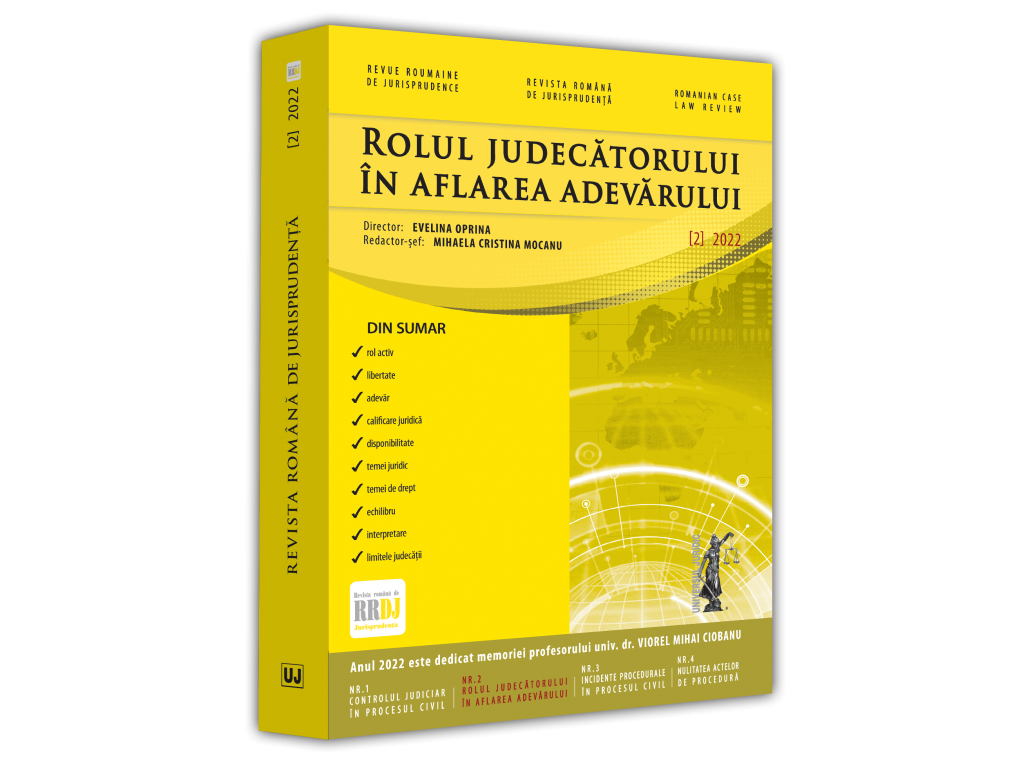The relationship between the principle of availability and the principle of active role. Legal aid contract – contract with one-off or successive performance
JURISPRUDENȚĂ COMENTATĂ ŞI ADNOTATĂ
Abstract
In the analysis of the relationship between the two principles of civil procedure, governed by Article 9 and Article 22 of the Civil Procedure Code, namely the principle of availability and the principle of the judge's role in ascertaining the truth, the principle of availability of the parties prevails in a situation where, although the court has questioned the legal qualification of the claim, the plaintiff insists on the initial qualification he gave to his action. The plaintiff is the holder of the legal action which he has brought and has the right to dispose of it, so that the court cannot override his expression of will.
The legal nature of the legal assistance contract is a mixed contract of undertaking and agency and it can be the subject of both an action for rescission and an action for termination, as also follows from Constitutional Court Decision No 178/2020.
In order to determine in concrete terms whether such a contract is a 'one-time' contract or a contract for successive performance, the content of the service to which the lawyer is bound must be observed.
Thus, if the agreement obliges the lawyer to perform a specific individual service (such as studying a file, drafting a document, analysing documents, etc.), the contract is enforceable at once.
On the other hand, when the lawyer's activity involves a series of distinct acts and operations of a continuous nature, such as giving advice, formulating a procedural document (application for a writ of summons, statement of defence, application for a writ of summons, etc.), representing or assisting the party in the proceedings, formulating requests for evidence, making submissions on all defences and requests which are put to the court, formulating the appeal, etc., the performance of which also involves the passage of a period of time, the contract is with successive performance.








